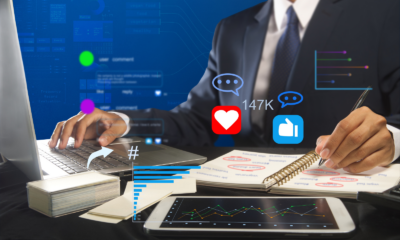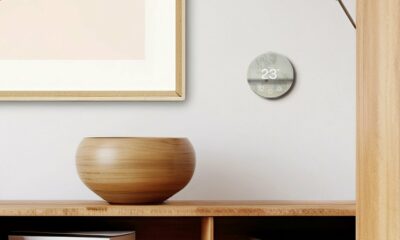MARKETING
How Content Marketing is Like a First Date
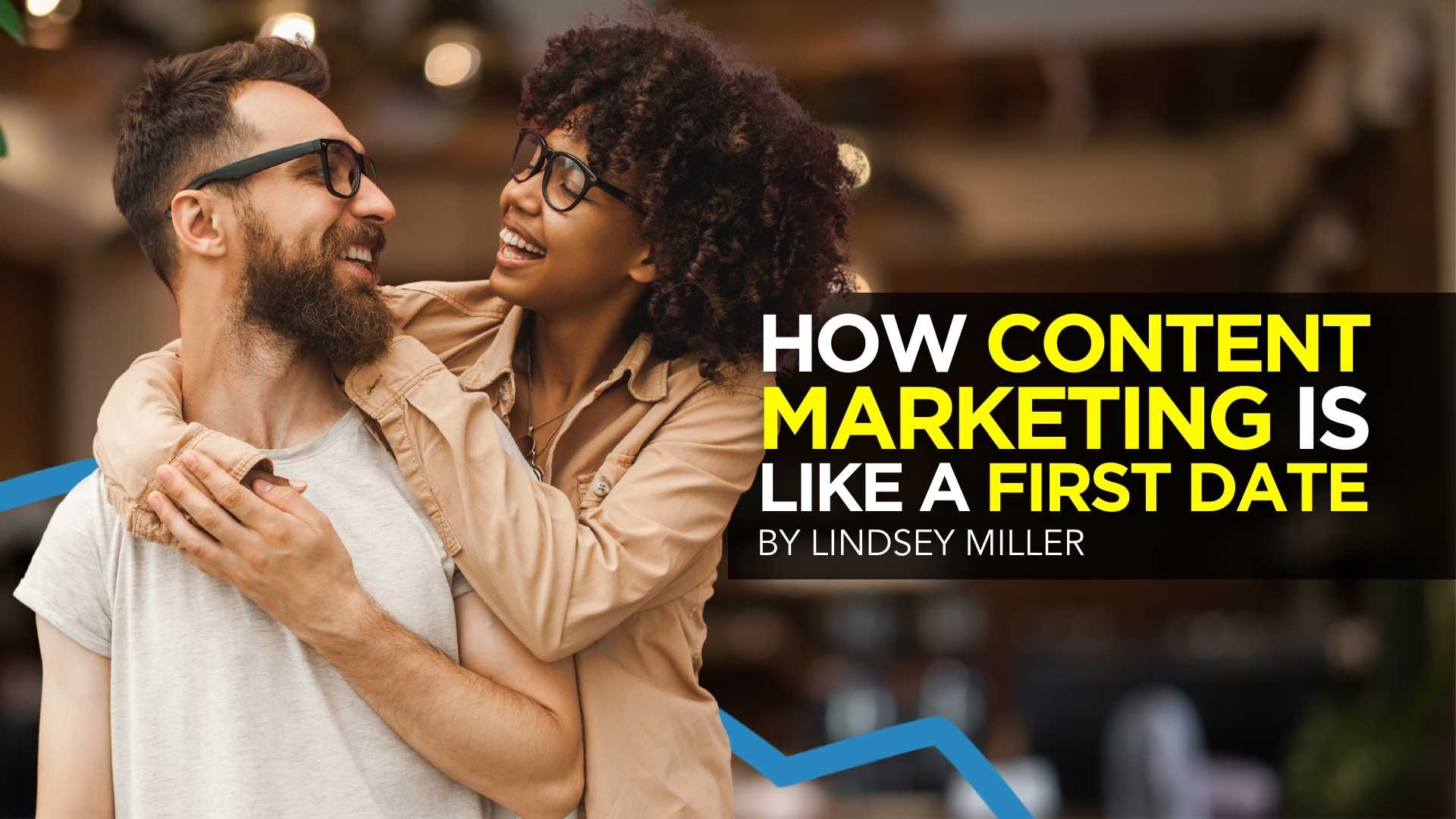
It’s Friday. You’re finally going out with that person you met online. You’ve been talking for weeks, and you’re excited to see them in person at last. The outfit you’ve chosen is perfect. That fresh haircut is serving you well. One spritz of perfume, and then you’re out the door.
Only, when you get to the bar, your date isn’t who you thought they were. They don’t look anything like their picture, you can’t get a word in edgewise, and you can’t get out of there fast enough.
Sound familiar? This kind of interaction is all too common in the dating world, and unfortunately, it happens a lot in the world of content marketing too.
5 Main Reasons Content Marketing is Like a First Date
Marketing is about building relationships. All too often, marketers treat it as an opportunity to hijack the conversation and aggressively pursue the customer. But this doesn’t work in dating and definitely won’t fly in marketing.
The goal of marketing and dating are the same: a long-term, mutually beneficial relationship. But more than that, there are five main reasons content marketing is like a first date.
- Gradual Connection. Like two people on a first date, it takes time for your customers to get to know your business. Sharing openly and honestly is the only way to build that connection over time.
- Fostering Engagement. Allowing your customers to join the conversation is crucial for making them feel valued. It’s like a conversation with a date where you ask them more about themselves.
- Building Credibility. It takes time for people to believe and trust what you say. Credibility is built slowly by sharing valuable information in conversation or online content.
- Gaining Trust. In dating and marketing, you have to share about yourself and show that your actions match your values before dates or that customers will trust you.
- Succeeding with First Impressions. Your date wants to know they aren’t wasting their time with you, and your customers want to know they’ve come to the right business for the help they need. To reassure them, you need to give a good first impression that puts them at ease.

The similarities don’t end there, and there are many steps you can take in your content strategy, so your brand doesn’t get ghosted.
Understanding Gradual Connection
Long-term relationships are comfortable, but first dates can be anxiety-inducing and awkward. It can be difficult to find common ground and build a connection when you don’t know someone. The same is true of marketing and customer acquisition.
Your content needs to make a good first impression. When potential customers come to your website or see your social media posts, it’s about building a gradual connection with them. Here’s what you need to remember when it comes to that connection.
Building a Bond Takes Time
While love at first sight may exist in romance novels, it’s not so common in marketing. Building a connection takes time. Your customer needs to get to know your brand through your content. That’s why creating quality content is important – you’re sharing why you’re trustworthy.
Your brand voice and the information you share show your customer that you know what you’re talking about and they can trust you. You can’t build this connection with just one blog post. Showing up consistently and sharing high-quality content is the only way.
Don’t Rush Expectations
You wouldn’t expect a marriage proposal at the end of the first date, so don’t look for your customers to purchase after seeing your content for the first time.

Creating high-value, search-engine-optimized content is crucial to getting your customers to your website. But once they’re there, don’t assume they’ll buy immediately.
Instead, give them opportunities to continue the relationship. Encourage them to follow you on social media or sign up for your newsletter. Give them some space to get to know your brand. And while you’re doing that, continue sharing information that answers all their questions.
Focus on the Audience
A common break-up cliché is, “It’s not you. It’s me.” But in content marketing, it’s not about you. It’s your audience. Focus on their needs as you’re creating content. Think about what questions they have. What resources will help them most?
Once your SEO content brings them to your website, how will you nurture the relationship? It would be a shame to bring your audience to your site only to lose them once they’ve found the answer to one question. Ask yourself how you can continue to serve them once they find your content.
Fostering Two-Way Engagement
You’ll get the first date if you have a great online dating profile. But if you spend that whole first date talking about yourself, you’re not going to get a second one. The same is true for content marketing. Fostering two-way engagement is how the relationship is built.
To Keep the Conversation Going in Your Marketing:
- Inspire Engagement from Your Audience. Ask questions in your content and encourage readers to comment or interact with your posts. Create interactive content like quizzes.
- Don’t Just Talk About Yourself. Instead, think about why your audience came to you. Answer their questions, solve their problems, or simply entertain them.
- Connect with Mutual Interests. Share your company values in your content and actions. These will help you connect with your ideal customer.
- Listen to Your Audience. If you find you’re getting a lot of similar questions from your audience, it’s a sign you need to make some content around those questions. Don’t be afraid to survey them to find out what they need from you.
- Use Emotional Language. Your audience found you online because they have a problem they need to solve. Their problem may be business as usual to you, but it’s something that’s a concern for them, and they want to feel like you understand where they’re coming from.
- Appropriately Respond. Whether they’re leaving comments on your posts or their feedback shows they need something that hasn’t been addressed, make sure you respond.

Want to get certified in Content Marketing?
Leverage the tools and channels to predictably and profitably drive awareness, leads, sales, and referrals—EVERYTHING you need to know to become a true master of digital marketing. Click Here
Building Credibility
Have you ever noticed that “be yourself” seems to be the go-to advice for dating, brand building, and pretty much everything else? There’s a good reason for that, which all comes down to credibility. Your audience needs to be able to trust you, and you have to build credibility with them for that to happen.
To Build Credibility:
- Be Authentically You. Being yourself is important because your audience knows when they see a faker. Share openly and honestly about your brand and what it stands for.
- Don’t Sugarcoat Your Business. You don’t have to make your business overly attractive or acceptable to people who aren’t your ideal customers. Focus on sharing the truth about what you do with the people who need your product or services.
- Don’t Undersell. You work hard, so don’t price your services cheaper than they should be or undervalue what you do. Part of being yourself is knowing your worth.
- Be Honest & Kind. Keep your messaging true to your company and what you do, and be nurturing and generous in the information you share.
Gaining Audience Trust
Once you’ve built your credibility, you can finally gain the trust of your audience. Think about trust in a relationship. You don’t just give it on the first date. That first date is probably in a neutral location because of how little trust justifiably exists. People earn trust over time through actions and authentic connection. The same is true for building trust with your audience.
To Gain Your Audience’s Trust:
- Be Respectful and Understanding. Show your audience you know where they’re coming from. Listen to their feedback.
- Respond Quickly. If they come to you with a question, they respect your knowledge. Hiring a community manager to respond to their questions quickly can help you become their go-to source of information.
- Be Consistent. Make content consistently by following an editorial calendar and regularly responding to questions and comments (including those on social media).
- Backup What You Say with Actions. Anyone can hop on the internet and say whatever they want. The brands that do what they say they’re going to do are the ones people trust.

Succeeding with First Impressions
Now, back to the first date. It’s your one shot to make a good first impression. The same is true for your company’s content. So, how do you get your audience to return after the first impression?
Ask for Continued Interaction
Encourage your audience to comment on your posts, follow you on social media, and sign up for your newsletter. Make it clear that you have more content on the way to answer their questions, and they won’t want to miss it.
When creating your editorial calendar, think about how to make one post into a series. It will get your audience to keep coming back to learn more.
Link to your older posts in your newer posts where appropriate, and continue to give your audience more reasons to stay on your site and learn more about your brand.
Using Calls to Action After Trust is Built
After you’ve built trust with your audience, they’re more likely to follow your calls to action. So don’t worry about selling in your posts. Instead, focus on giving your audience more valuable information.

Not many customers purchase after reading one blog post. Focus on putting your calls to action where you’ve already built trust. A newsletter is a great place for that. Those subscribers are already interested in what you do, and they trust you with their email addresses. They’re more likely to follow a call to action than a casual blog reader.
Follow Up & Reach Out
When you receive questions or comments from your audience, respond quickly, and follow up later to see how they’re doing. Ask if they need more help or how applying your advice went for them. Follow-up shows that you care about how they’re doing and that they aren’t just nameless followers to you. It shows your brand truly cares and can be a game-changer in building trust.
Get the Second Date
Every business can and should use marketing, but it’s not all created equal. Your audience wants authenticity and a connection before they open their wallets. Taking the time to make a good first impression is the first step to building customer loyalty and mutually beneficial relationships.
MARKETING
How Tagging Strategies Transform Marketing Campaigns


As a marketer, I understand how today’s marketing campaigns face fierce competition. With so much content and ads competing for eyeballs, creating campaigns that stand out is no easy task.
That’s where strategies like tagging come in.
It helps you categorize and optimize your marketing efforts. It also helps your campaigns cut through the noise and reach the right audience.
To help you out, I’ve compiled nine ways brands use a tagging strategy to create an impactful marketing campaign.
Let’s get to it.
How Brands Use a Tagging Strategy
Tagging involves using keywords or labels to categorize and organize content, products, or customer data. You attach tags to specific items or information to make searching, sorting, and analyzing data easier.
There are various types of tags, including meta tags, analytics tags, image tags, hashtags, blog tags, and more.
So, how do brands use a tagging strategy to make their marketing campaigns stand out?
Improve Social Media Engagement
With over 5 billion users, social media provides an easy way to connect with your audience, build relationships, and promote your offerings.


Use a tagging strategy to boost social media interactions. Consistently use hashtags that align with current trends and topics. This encourages people to interact with your content and boosts content visibility.
You can also use tags to monitor brand mentions of your products or your industry. This allows you to engage with your audience promptly.
Consider virtual social media assistants to streamline your tagging strategy. These AI-driven tools can suggest relevant hashtags, track mentions, and automate responses. Implementing them can save time and resources while ensuring consistent engagement across your socials.
Build a Personal Brand on LinkedIn
LinkedIn is the world’s largest professional networking platform, with over 1 billion members across 200 nations. It offers excellent opportunities for individuals and businesses to build and nurture their brands.


However, simply creating a professional profile isn’t enough to build a personal brand on LinkedIn.
Use various tags to increase your visibility, establish thought leadership, showcase expertise, and attract the right connections. For instance, use skill tags to showcase your expertise and industry tags to attract connections and opportunities within your industry. Use certification tags to help showcase your expertise and credibility to potential employers or clients.
Facilitate Customer Segmentation and Personalization
Personalization matters—more so in today’s data-driven world. In fact, 65% of consumers expect your brand to adapt to their changing preferences and needs.
To meet this expectation, consider using a tagging strategy.
Segment your customers based on shared characteristics, such as demographics, interests, purchase history, cart abandonment, and behavior.
Here’s a summary of the steps to customer segmentation.
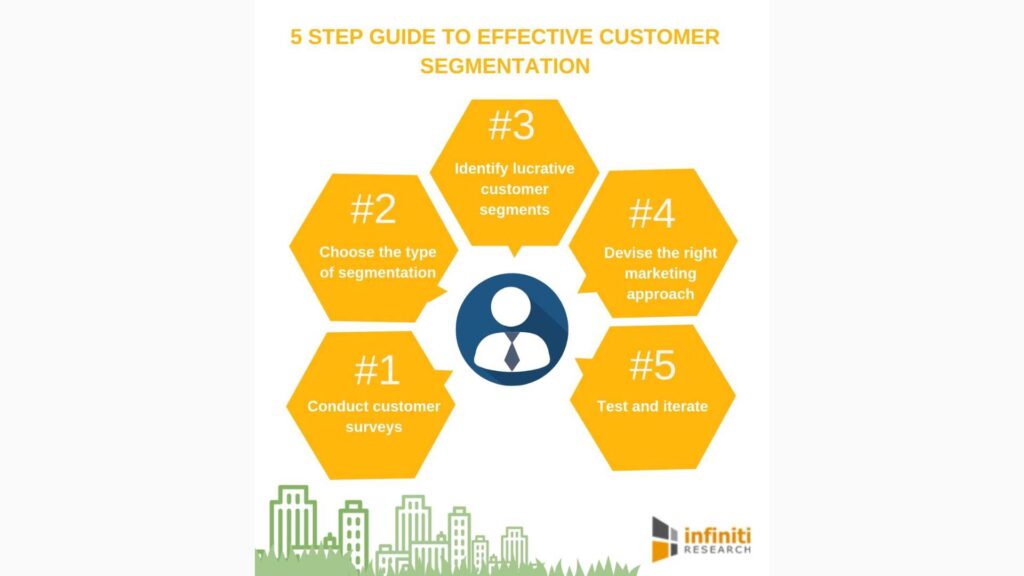

With your customer segments ready, use tags to tailor your marketing messages and offerings to specific segments. Imagine sending targeted email campaigns based on what your customers need. That’s the power of segmentation and tagging in action!
Enhance SEO and Content Discoverability
Tagging content can have a profound impact on search engine optimization (SEO) and content discoverability. When users search for specific topics or products, well-tagged content is more likely to appear in search results, driving organic traffic to your website.
Additionally, tags can help you analyze the most popular topics with your readers. Then, the results of this analysis can help you adjust your content strategies accordingly.
And get this— certain AI tools can help analyze your content and suggest relevant tags and keywords. Using these tools in addition to a tagging strategy can help optimize your SEO strategies and boost content discoverability.
Partner with the Right Influencers
Influencer marketing has become a go-to marketing approach for modern brands. Recent stats show that 85% of marketers and business owners believe influencer marketing is an effective marketing strategy.
But how do you find the perfect influencer for your campaign?
Utilize tags to identify influencers who are relevant to your niche. Beyond this, find influencers who align with your brand values and target audience.
Additionally, look for influencers who use hashtags that are relevant to your campaigns. For instance, fashion influencer Chiara Ferragni uses #adv (advertising) and #ghd (good hair day) hashtags in this campaign.


Monitor industry-specific hashtags and mentions to discover influential voices and build profitable relationships with them.
Track Hashtag Performance
Tracking your hashtag performance helps you understand your campaigns’ engagement, reach, and effectiveness.
To achieve this goal, assign special hashtags to each marketing project. This helps you see which hashtags generate the most engagement and reach, enabling you to refine your tagging strategy.
Here’s an example of a hashtag performance report for the #SuperBowl2024.


This curated list of hashtag generators by Attrock discusses the top tools for your consideration. You can analyze each and choose the one that best fits your needs.
Categorize Content Accordingly
The human attention span is shrinking. The last thing you want is for your audience to have difficulty in finding or navigating your content, get frustrated, and bounce.


Untagged content can be difficult to navigate and manage. As any marketer knows, content is important in digital marketing campaigns.
To categorize your content, identify the main categories by topics, themes, campaigns, target audiences, or product lines. Then, assign relevant tags based on the categories you’ve identified. After that, implement a consistent tagging strategy for existing and new content.
Organizing your content using tags can also help streamline your content management workflow. Most importantly, readers can easily find the content they’re looking for, thereby boosting overall user experience, engagement, and conversions.
Boost Your Email Marketing Strategy
Email marketing remains a powerful marketing tool in today’s digital world. It’s also another area where brands use a tagging strategy to directly reach their target audience.
Use tags to segment your email list and personalize your marketing messages. Then, you can send targeted emails based on factors like purchase history, interests, and demographics.
Personalization can significantly improve open rates, CTRs, and overall engagement and conversion rates. It’s a simple yet impactful strategy to make your email marketing strategy more effective.
Plus, you can use tags to track how well your emails perform with each group. This helps you understand what content resonates best with your audience and provides insight on how to improve your emails going forward.
Enhance Analytics and Reporting
Every marketer appreciates the immense value of data. For brands using tagging strategies, tags are powerful tools for gathering valuable data.
Analyze how users interact with your tagged content. See which tags generate the most clicks, shares, conversions, and other forms of engagement. Gain insight into audience preferences and campaign effectiveness.
This granular data about your marketing efforts allow you to make data-driven decisions, allocate resources effectively, and refine your marketing strategies.
Final Thoughts
There isn’t a single correct way for brands to use a tagging strategy in marketing. You can use a tagging strategy however you see fit. However, the bottom line is that this strategy offers you a simple yet powerful way to create attention-grabbing and unique marketing campaigns.
Fortunately, tagging strategies are useful across various marketing initiatives, from social media and email marketing to SEO and more.
So, if you’re ready to elevate your marketing campaign, build a strong brand presence, and stand out among the competition, consider employing effective tagging strategies today.
MARKETING
Tinuiti Recognized in Forrester Report for Media Management Excellence
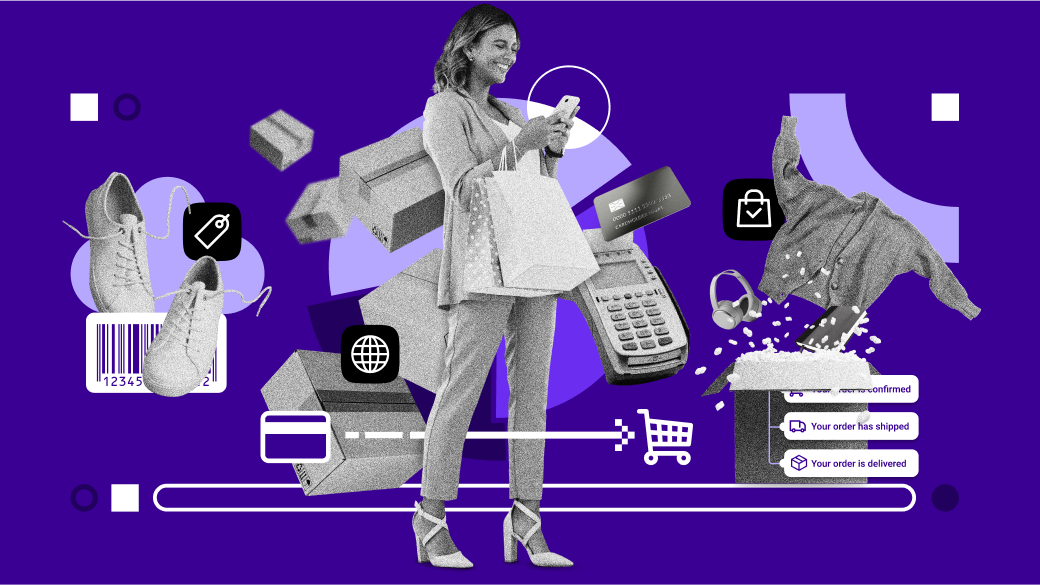
Tinuiti, the largest independent full-funnel performance marketing agency, has been included in a recent Forrester Research report titled, “The Media Management Services Landscape, Q2 2024.” In an overview of 37 notable providers, this comprehensive report focuses on the value B2C marketing leaders can expect from a media management service provider, and analyzes key factors to consider when looking for a media management partner such as size and business scenarios. B2C marketing executives rely on media management services to:
- Augment the efficacy of media investments
- Bridge media impressions to commerce transactions
- Enhance ad campaigns to drive performance
Report authors, VP, Principal Analyst Jay Pattisall and Senior Analyst Nikhil Lai call attention to the pressing need for providers to prove their value, deliver profitable ROAS, and drive alignment between CMOs and CFOs and thus liberate strained marketing budgets.
Our Always-On Incrementality tool – which is a part of our patented tech, Bliss Point by Tinuiti – empowers marketers to validate the incrementality of their spend on each ad set, media channel, and marketing tactic so marketers can create stronger, more focused campaigns that get the job done without sacrificing the bottomline.
B2C marketing leaders often seek and expect key business scenarios from media management service providers including media measurement and attribution, data strategy, and marketing mix modeling. MMM’s adaptability to the post-cookie/ post-IDFA world positions it as an essential tool for marketers. As businesses seek to connect the dots, leverage data, and make strategic decisions, MMM is a crucial ally in the dynamic realm of mixed media advertising. Our Rapid Media Mix Modeling sets a new standard in the market with its exceptional speed, precision, and transparency.
According to the Forrester report, “46% of senior B2C marketing and advertising decision-makers say they plan to integrate performance and brand media assignments with a single media agency in the next 12 months…”
In our quest to better understand all revenue-driving aspects of a given campaign, we have started on a process to quantify the impact of Brand Equity, which we believe is one of the largest missing pieces in more accurate and complete measurement.
Learn more about Bliss Point by Tinuiti, our use cases, and our approach to performance and brand equity.
The Landscape report is available online to Forrester customers or for purchase here.
MARKETING
Let’s Start Treating Content More Like We Treat Code

The technology space is pretty obsessed with preventing code defects from getting to production. We take great pains to make sure that a mistake doesn’t make it from the developer’s fingertips all the way through to the product system.
There’s an entire field called DevOps (short for “development operations”). This is something like a $5 billion industry. There are entire market segments filled with companies that tightly control the movement and testing of code.
Search for “DevOps diagram” sometime. You’ll be amazed at what you find—detailed schematics showing exactly how code should be copied, packaged, tested, and deployed. Developers who don’t have an artistic bone in their bodies suddenly turn into Da Vinci when describing in exacting detail how they want to orchestrate code deployments.
All of this is in search of one goal: prevent bad code from reaching production. A lofty goal, to be sure.
…but why don’t we care so much about content?
Where we have majestic acrobatics on the code side, when it comes to content, the process is usually something like, “Well, Alice writes something in Word, then emails it to Bob, and he copies it into the rich text editor” then presses publish.
Congratulations, you have the tightest, most reliable codebase serving up terrible content. A+. Great job.
Content defects are a thing, and we don’t do enough to prevent them. In particular, we don’t look at content development as a process to be managed. We think it’s some kind of magic, not a flow of work with checkpoints, trackable assignments, and review gateways. We’re somehow convinced this would take the “soul” out of it or something.
So, while our developers get six figures worth of toys to make sure they can swap every line of code instantly without spilling their coffee, our content creators are copying and pasting things into Slack and yelling “I swear sent that to you last week!” over the cubicle wall.
We need to do better.
Content creation isn’t magic—no more than code is magic. It’s a process that can and should be managed just like code deployments, and it deserves the same level of regard.
Your content creators need:
- Library services. Your developers have source code management. They know where code is, all the time. They probably have versions of it dating back to when they were teenagers. These things exist for content as well—they’re called content marketing platforms (CMPs) and digital asset management systems (DAMs). They’re designed to store, organize, and version content assets so creators know where everything is.
- Change management, in the form of editorial calendaring. Your developers know when code will be released (note: don’t do it on Fridays). They plan these things long in advance. But ask a content creator when Content Item X for the new campaign is launching, and they can only say something like, “I don’t know. I showed it to Bob. It’s in his court now…”
- Workflow. Developers have detailed ticket management systems that can tie their actions down to the exact line of source code they changed to resolve a defect. These systems exist so that everyone knows, at all times, who is responsible for what. Meanwhile, the content editors can only shrug when someone asks who was supposed to edit the CEO’s blog post that she just announced from the keynote stage.
- Content preview. I promise you that your development team has a graduated system of environments where they test code. They probably spend hundreds of hours maintaining it, so they can run code in isolation and know exactly how it works before they deploy it. Think of that fondly next time when your image caption is published in 30pt bold-faced font because no one told you that it wouldn’t be. (Incidentally, I’ve been thinking about preview a lot lately.)
Here’s why this is important:
Content defects matter. They can be far more damaging than code defects, while being so much harder to detect. By the time you realize something is wrong, the problem may have been existing in public for a long time, doing a lot of damage.
Imagine that you have a software company, and you’ve been trying to get an analyst to include your software in one of their reports. Your Analyst Relations staff has been consistently courting, cajoling, and hinting to this analyst that your software fits their segment exactly, and would be a great addition to the report.
The analyst finally decides to check things out. They go to your website, looking for evidence of all the things you told them about. They expected to find reinforcement of that information, that energy, that…vibe.
But, they didn’t. Their experience fell flat. They gave you a 20-minute chance, but then clicked away and didn’t look back.
Oh sure, you had plans. You were going to revamp that part of the website, and you had mentioned it to Gary just before he went on vacation. You heard some rumors that people were working on it, and some content got changed, but you never saw and never had a chance to guide it. Content development seemingly happened in a far-off land somewhere. Normally, when something changed on the website, you were as surprised as anyone.
This is a content defect. The whole thing. One big defect.
Why don’t we categorize like this? Why don’t we call it what it is?
Maybe because it’s not…binary? With code, things often either work, or explode spectacularly, so we can stand back and confidently say, “Yup, that’s busted.”
But with content, there’s a spectrum—there’s a range. People can look at it and say, “yeah, that’s fine” even when it’s not.
The only solution here is process. You need a way to make sure that content is seen by the right people, and at the right time, and has a way of reflecting the right input.
This happens with code all the time. We handle code exactingly, rigorously, and with due process and care.
We need to demand the same for content. And we need to start acknowledging that poor content is a failure of process, a failure of planning, and a failure of tooling.
The tools are available to avoid this. We need to implement them and use them.
Interested in learning how Optimizely Content Marketing Platform can better support your content creation process? See how it works in this quick video.
-
SEARCHENGINES6 days ago
Daily Search Forum Recap: April 29, 2024
-
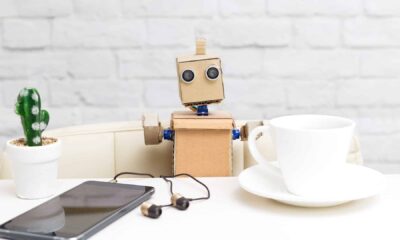
 MARKETING7 days ago
MARKETING7 days agoMicrosoft unveils a new small language model
-
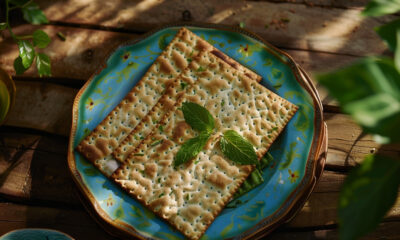
 SEARCHENGINES7 days ago
SEARCHENGINES7 days agoOffline For Last Days Of Passover 5784
-
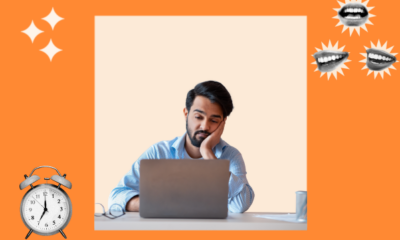
 MARKETING6 days ago
MARKETING6 days agoQuiet Quitting vs. Setting Healthy Boundaries: Where’s The Line?
-
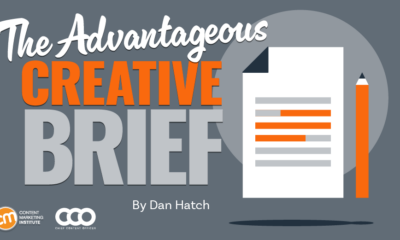
 MARKETING4 days ago
MARKETING4 days agoHow To Develop a Great Creative Brief and Get On-Target Content
-

 PPC6 days ago
PPC6 days agoHow to Promote Your Digital Marketing Agency: 4 Growth Strategies
-
SEARCHENGINES4 days ago
Daily Search Forum Recap: April 30, 2024
-
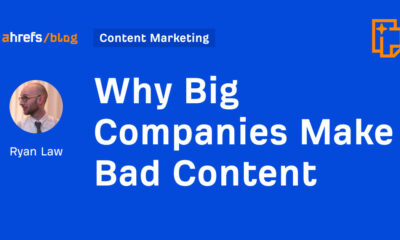
 SEO4 days ago
SEO4 days agoWhy Big Companies Make Bad Content







